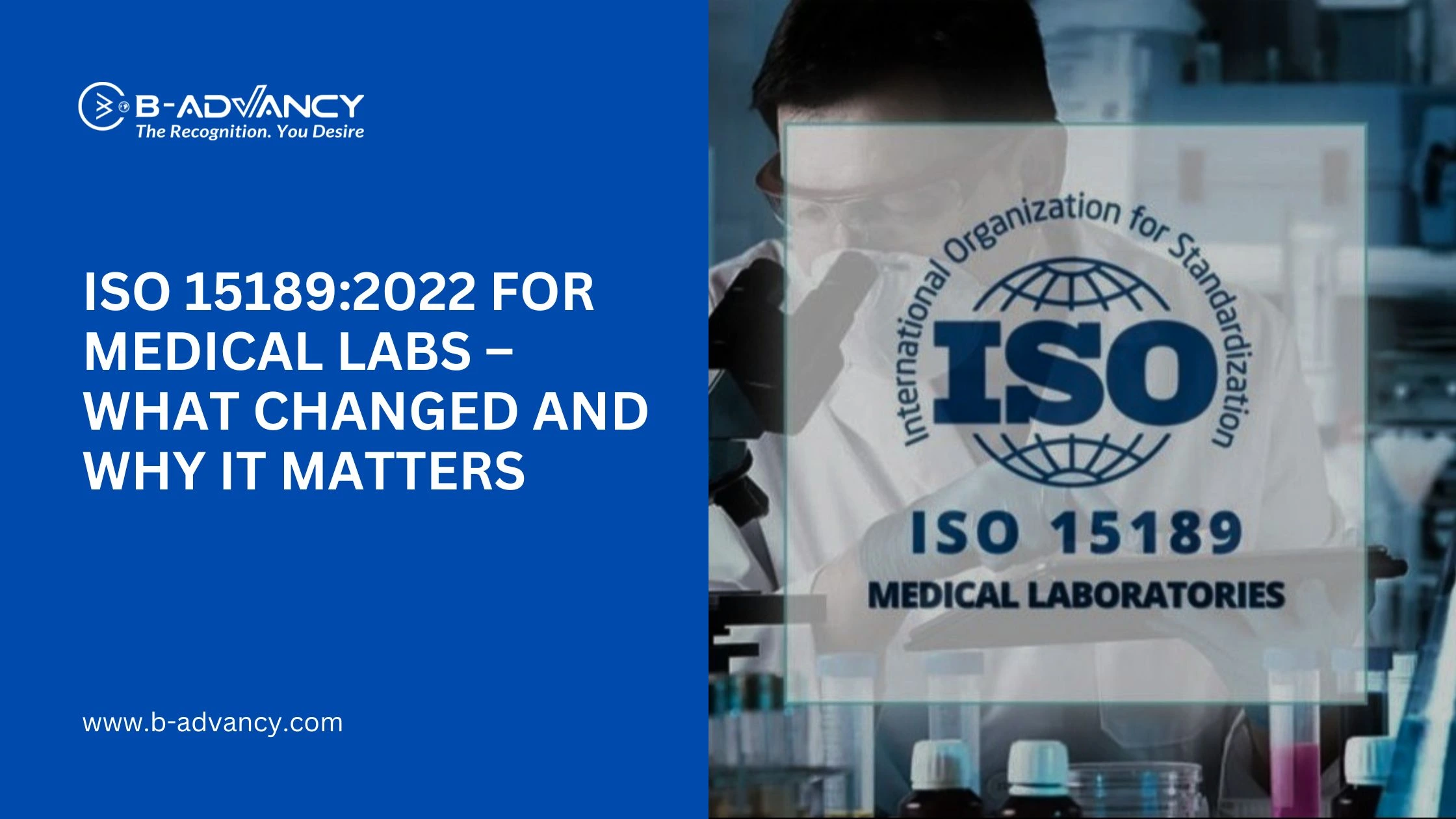
In the rapidly evolving landscape of healthcare, the need for reliable and accurate medical testing has never been more critical. Medical laboratories serve as the backbone of diagnostic services, and their credibility directly affects clinical decisions and patient outcomes. The recent revision of ISO 15189 in 2022 reflects this growing importance and introduces substantial changes that align laboratory practices with today’s demands for quality, efficiency, and patient safety.
Let’s explore what changed in ISO 15189:2022 and why it matters for medical laboratories around the world.
ISO 15189 is an international standard developed by the International Organization for Standardization (ISO), specifically designed for medical laboratories. It sets out the requirements for quality and competence in medical lab operations, combining both technical competence and quality management principles.
The 2022 revision replaces the previous 2012 version and incorporates updated concepts based on recent healthcare needs, risk-based thinking, and integration with other ISO standards such as ISO/IEC 17025 and ISO 9001.
The ISO 15189:2022 standard introduces significant updates that go beyond simple administrative revisions. Here's a detailed look at the key changes:
One of the most notable changes is the integration of risk-based thinking throughout the standard. Instead of focusing only on procedures, ISO 15189:2022 encourages laboratories to identify potential risks and opportunities within their processes, allowing more proactive quality management. This aligns with modern quality management practices and ensures better preparedness for handling unexpected challenges.
The 2022 version goes deeper into the role of laboratories in ensuring patient safety. It addresses aspects like error prevention, timely communication of results, and collaboration with healthcare providers. By focusing on the impact of lab operations on patient outcomes, it strengthens the lab's role in clinical care.
The new standard is now more harmonized with ISO/IEC 17025 (used by testing and calibration laboratories) and ISO 9001 (quality management systems). This alignment promotes consistency across labs and makes it easier for integrated healthcare facilities to maintain multiple standards.
ISO 22870, which previously covered requirements for point-of-care testing (POCT), has now been integrated into ISO 15189:2022. This is a major step, reflecting the growing importance of POCT in modern diagnostics, especially in pandemic response and rural healthcare settings.
With the rise of digital labs, information security and data integrity have become major concerns. The updated version adds more requirements around electronic data management, protecting patient confidentiality, and ensuring the traceability of records.
Competency isn’t just limited to technical staff anymore. ISO 15189:2022 outlines clearer criteria for all roles involved in lab processes—from reception and reporting to quality management—emphasizing continuous training, evaluation, and improvement.
The new standard strengthens the role of top management in establishing a culture of quality. Leadership is now expected to take active responsibility for ensuring that quality objectives are defined, measured, and achieved.
For patients and clinicians, the accuracy of lab results is non-negotiable. By adhering to ISO 15189:2022, medical laboratories demonstrate their commitment to delivering reliable, high-quality diagnostic services that patients and doctors can trust.
ISO-accredited labs enjoy higher credibility, both locally and internationally. This is especially important for labs involved in international studies, medical tourism, or public health reporting, as it streamlines collaboration and data sharing across borders.
From AI-driven diagnostics to digital pathology, medical labs are entering a new technological era. ISO 15189:2022 prepares labs to adapt to such innovations without compromising on quality or compliance.
With its focus on process optimization and risk mitigation, the new standard helps labs run more efficiently. This means better turnaround times, fewer errors, and improved patient satisfaction—all crucial factors in competitive healthcare environments.
Many national health authorities and accreditation bodies adopt ISO 15189 as a benchmark for lab licensing and compliance. Upgrading to the 2022 version ensures labs remain aligned with evolving regulatory expectations.
Transitioning to ISO 15189:2022 isn’t just a documentation update—it requires a strategic shift in how laboratories think and operate. Here’s how medical labs can prepare:
Conduct a Gap Analysis: Compare current practices against the new requirements to identify areas needing improvement.
Update the Quality Management System (QMS): Integrate risk-based practices, leadership involvement, and performance monitoring into the QMS.
Train and Engage Staff: Provide targeted training to all team members on new competency and safety requirements.
Engage with Accreditation Bodies: Stay informed on timelines and expectations for transitioning to the 2022 version.
Focus on Continuous Improvement: Establish regular internal audits, reviews, and improvement cycles to maintain long-term compliance.
ISO 15189:2022 marks a major evolution in medical laboratory standards, placing patient safety, risk management, and quality at the forefront of diagnostic services. In 2025, as healthcare systems continue to deal with complex challenges like pandemics, chronic disease management, and resource constraints, labs that adopt and align with this updated standard will be best positioned to lead with trust, accuracy, and resilience.
For medical laboratories, this is more than just compliance—it’s a strategic investment in excellence.